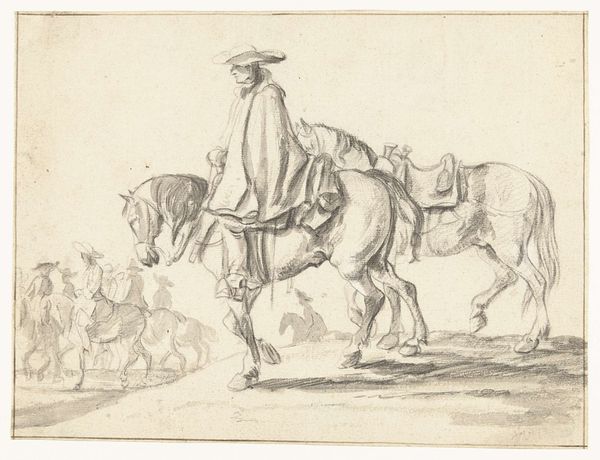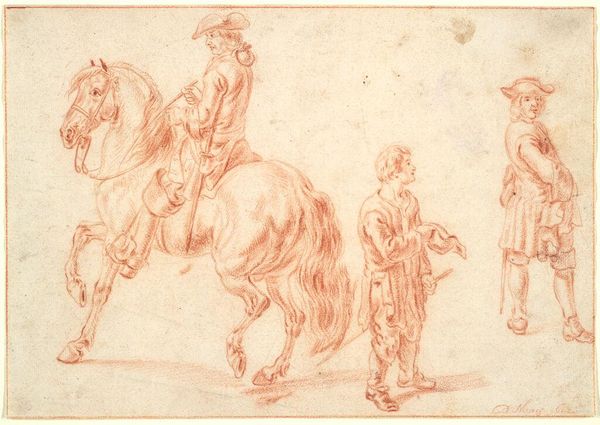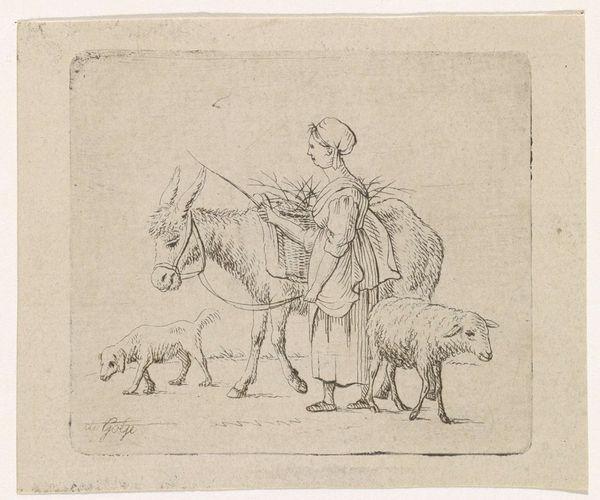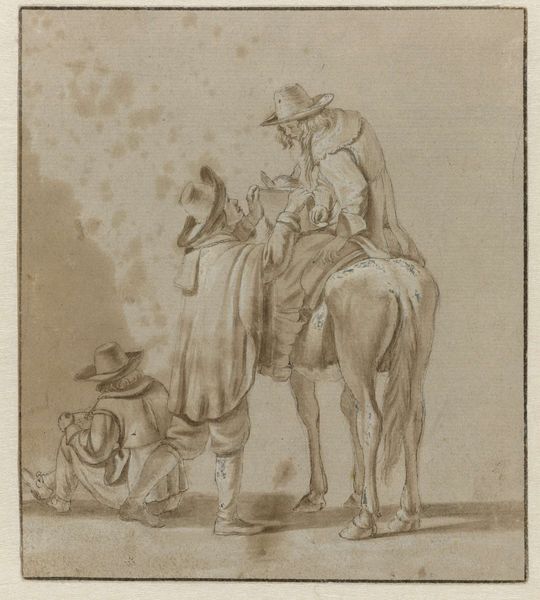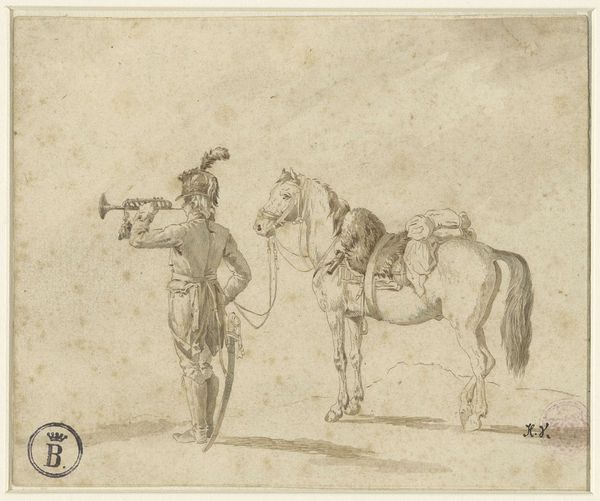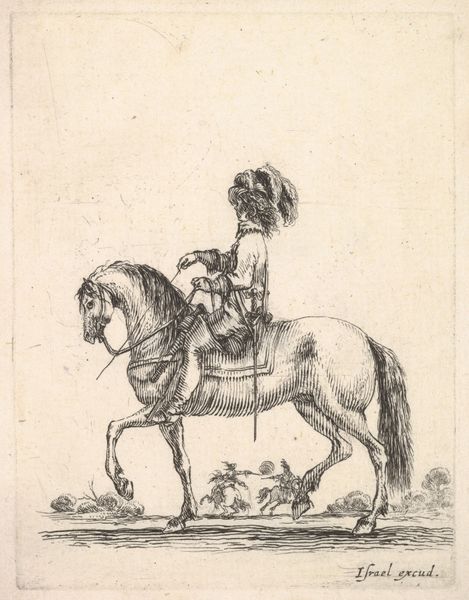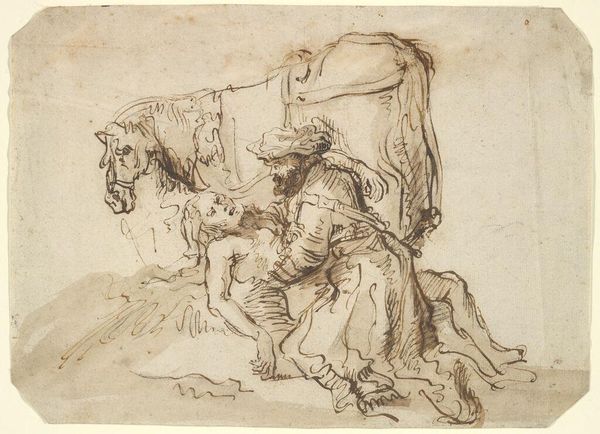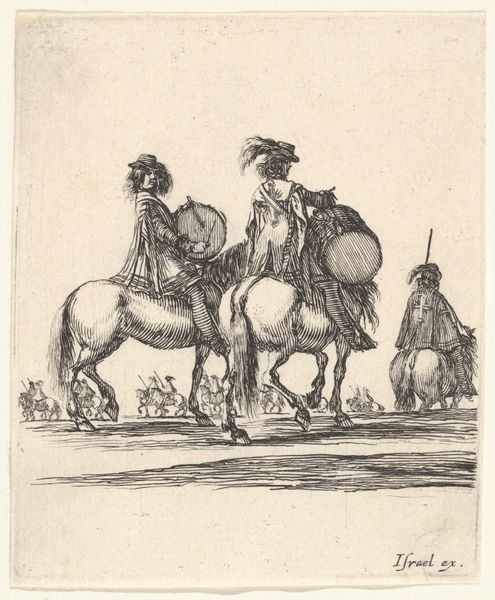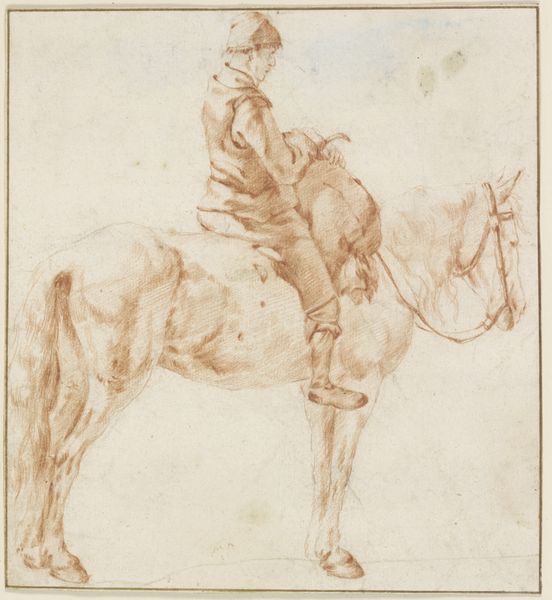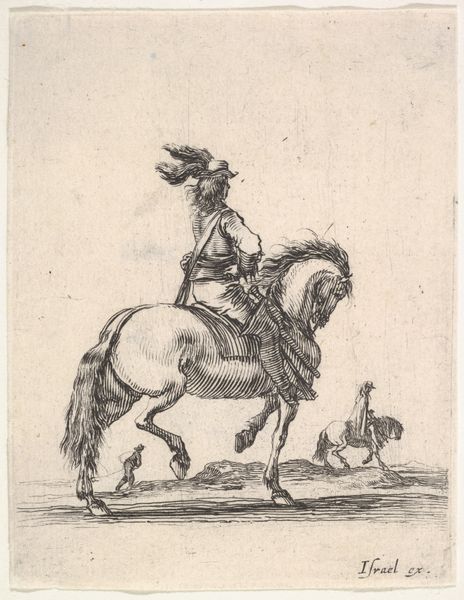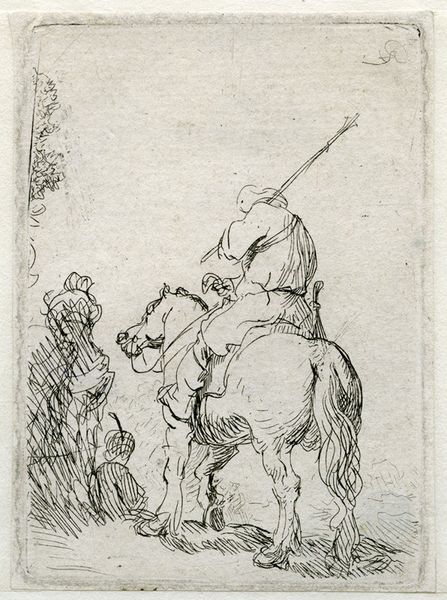
drawing, paper, pencil
#
portrait
#
drawing
#
dutch-golden-age
#
landscape
#
figuration
#
paper
#
pencil
#
genre-painting
Dimensions: height 106 mm, width 89 mm
Copyright: Rijks Museum: Open Domain
Editor: This drawing, "Ruiter te paard pratend met een jongetje," or "Horseman Talking to a Boy," by Gerard ter Borch, dates back to 1630. It's rendered in pencil on paper and possesses a stark, almost dreamlike quality, capturing a momentary interaction. What do you see in this piece, particularly considering its social context? Curator: I see a snapshot of 17th-century Dutch society, but one pregnant with the subtle power dynamics inherent in that era. Consider the positioning: the horseman, elevated both literally and figuratively, conversing with a boy on the ground. It begs the question: what kind of dialogue is truly possible between individuals of disparate social standing? This scene isn't just a neutral observation, it highlights those baked-in societal hierarchies, doesn't it? Editor: It definitely brings those hierarchies into sharp relief. The horseman seems detached, almost indifferent, while the boy’s expression is hidden. Do you think ter Borch was intentionally critiquing this disparity? Curator: Critiquing, perhaps subtly. Artists during the Dutch Golden Age often reflected the values of their patrons, who were frequently members of the wealthy elite. However, even within that framework, a socially conscious artist like ter Borch could employ nuance. He could introduce questions about equity and privilege, maybe even challenge the viewer to consider their own position within the societal hierarchy, all through a seemingly simple genre scene. Does that nuance change how you see the drawing now? Editor: Absolutely. The drawing now feels less like a neutral observation and more like a prompt, a visual invitation to examine the unspoken power dynamics that were at play during the Dutch Golden Age, and that maybe still resonate today. Curator: Precisely. By examining the art of the past, we can start to look at how inequalities become visible.
Comments
No comments
Be the first to comment and join the conversation on the ultimate creative platform.
